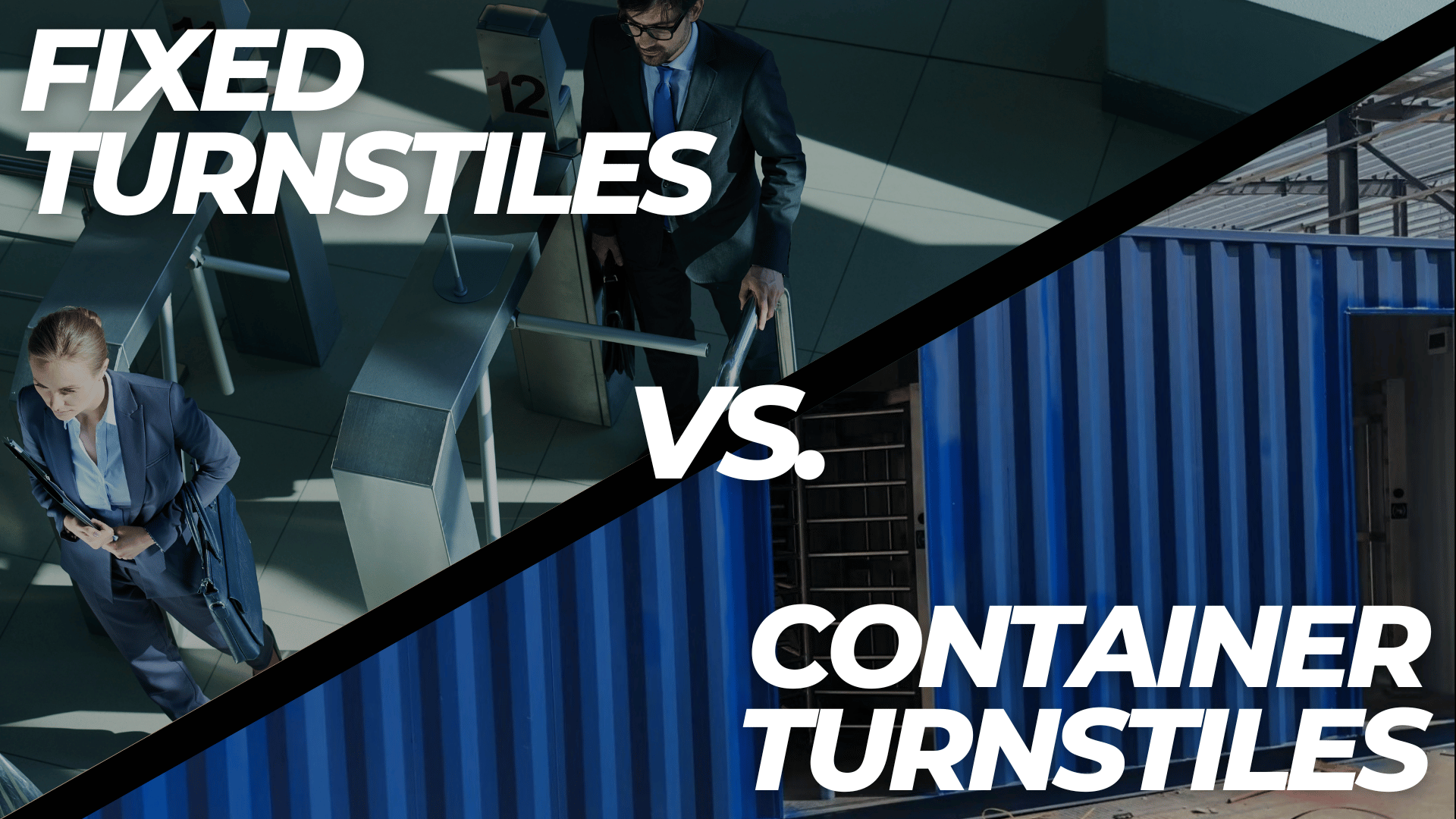Access control systems are important for any location, whether it’s a busy office downtown or a remote construction site. However, each site has their own unique characteristics that require different solutions. When choosing between fixed turnstiles and container turnstiles, it’s important to understand the differences. The right choice can affect both security and how well your site operates.
Ease of Deployment
Installing fixed turnstiles can be a complicated process. They need to be securely attached to the ground, which may involve drilling or pouring concrete. If installing multiple units, taking accurate measurements beforehand is necessary to space the gates correctly. Plus, each unit needs to be wired to a power source. As a result, installing fixed turnstiles often requires coordination with various teams, making the process even longer and more costly.
On the other hand, container turnstiles are easier to install. The turnstiles are already installed inside a CONEX box, so there’s no need for drilling or wiring. All you need to do is place the container in the right spot, connect it to power, and install some fencing around the perimeter. There’s no need to lay down permanent foundations or make structural changes, so installation is much faster and cheaper.
Flexibility and Mobility
Fixed turnstiles are meant to be permanent, which makes them difficult to move. This is intentional, as it prevents people from bypassing security by moving the turnstiles out of the way. If you need to relocate them, it can be a time-consuming and expensive process. While they provide strong security and stability, they don’t adapt well to changing security needs or site layouts. They are best for places that need long-term access control, like office buildings or stadiums.
Container turnstiles, however, are designed for easy relocation. The turnstiles are securely fixed to the base of the container, but the container itself isn’t attached to anything. This allows you to quickly move and set it up wherever it’s needed. Container turnstiles are especially useful for temporary events, construction sites, or remote locations.
Cost and Investment
Fixed turnstiles may have a lower initial cost, but installation can be expensive. The process requires drilling, wiring, and integration with existing systems, which can add up. These turnstiles are not ideal for temporary locations or sites that change, as you’ll face similar costs each time the setup is moved or changed. However, fixed turnstiles can provide a better return on investment for locations with consistent security demands over time.
Container turnstiles cost more upfront, especially those that are custom-made. But because they don’t require installation or infrastructure changes, they save on setup costs. They can also be reused for different events or temporary projects, offering long-term value. Businesses that frequently change work locations or modify site layouts may benefit from container turnstiles since they can be easily moved.
Scalability and Expansion
Fixed turnstiles are limited in scalability. Adding more units means making significant changes to the building’s infrastructure, like dismantling and reinstalling current units. Because of this, fixed turnstiles work best in facilities with predictable foot traffic and steady security needs.
Container turnstiles are more scalable and flexible. You can add more units without needing to modify the site or do any heavy construction. Plus, they can be easily moved within the site as needed. This makes them perfect for temporary installations or events where access needs change over time.
Contact 2M Technology
When choosing your access control solution, it’s important to consider the specific needs of your site. Fixed turnstiles are great for permanent locations with steady layouts, while container turnstiles are better for temporary or changing environments.
No matter what you need, the team at 2M Technology is here to help you choose the best solution. Contact us today to secure your site, whether it’s a long-term or short-term setup. Call us at +1 (214) 988-4302 or email us at sales@2mtechnology.net.

